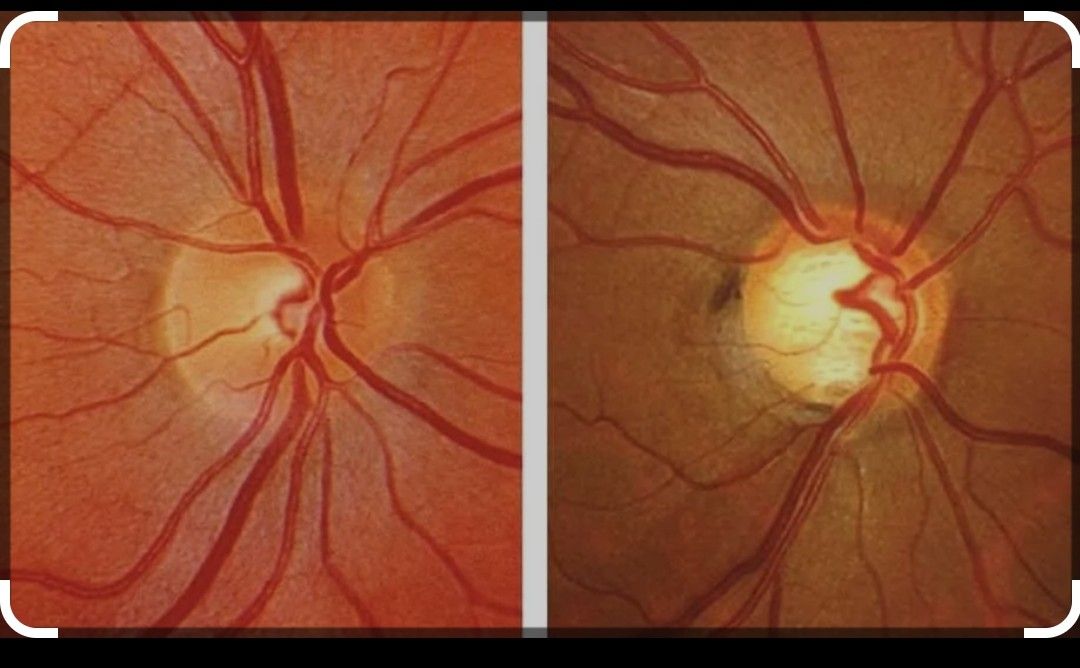GLAUCOMA
Glaucoma is a disease of the optic nerve, the structure that carries the visual message from the eye to the brain where it is processed. Elevated eye pressure is the most common cause of glaucomatos damage and most treatments are designed to lower the pressure in the eye. Some important risk factors include age, family history, diabetes, cardiovascular disease, and African or Hispanic ancestry. Glaucoma is a leading cause of blindness in the United States and loss of sight from glaucoma can be prevented with early treatment.

normal optic nerve head (left pic) and glaucomatous optic nerve head (right pic).
Chronic open angle glaucoma has a slow gradual onset and is the most common form of glaucoma. Typically there are no symptoms in the early stages. As optic nerve damage progresses, defects in the peripheral vision can appear. Usually these do not affect your vision in daily activities but can progress when unchecked and lead to total blindness.
Closed angle glaucoma is much less common and has acute (sudden) onset with extremely high pressure in the eye. Pain, redness, and blurry vision in one eye will usually occur and this represents a true eye emergency. It can be easily misdiagnosed and prompt referral to an ophthalmologist can prevent permanent loss of vision.
Regular eye examinations are the best way to detect glaucoma. A glaucoma screening that checks only pressure is not sufficient to diagnose glaucoma. During a typical glaucoma evaluation, your intraocular pressure is measured, the optic nerve is visualized by ophthalmoscopy to ascertain any damage, the peripheral vision of each eye is carefully tested using perimetry/visual field testing, and the health of the optic nerve is objectively evaluated with OCT (optical coherence tomography).
Damage and loss of vision from glaucoma cannot be reversed. Medicated eye drops are often the first line of treatment to lower the pressure in the eye. Laser surgery treatments may be recommended for glaucoma. In open angle glaucoma, selective laser trabeculoplasty (SLT) is used to treat the drainage structure of the eye to lower the pressure. In closed angle glaucoma the laser creates a small opening (irridotomy) in the iris to improve the flow of fluid in your eye. Dr. Jones is a specialist in selective laser trabeculoplasty and irridotomy. Surgery in the operating room may be required in more advance situations. This surgery is done on an out patient basis and is often combined with cataract surgery.
BROWSE OUR WEBSITE
CONTACT INFORMATION
1951 Bench Road – Suite C Pocatello, ID 83201
- Mon - Thu
- -
- Friday
- -
- Sat - Sun
- Closed